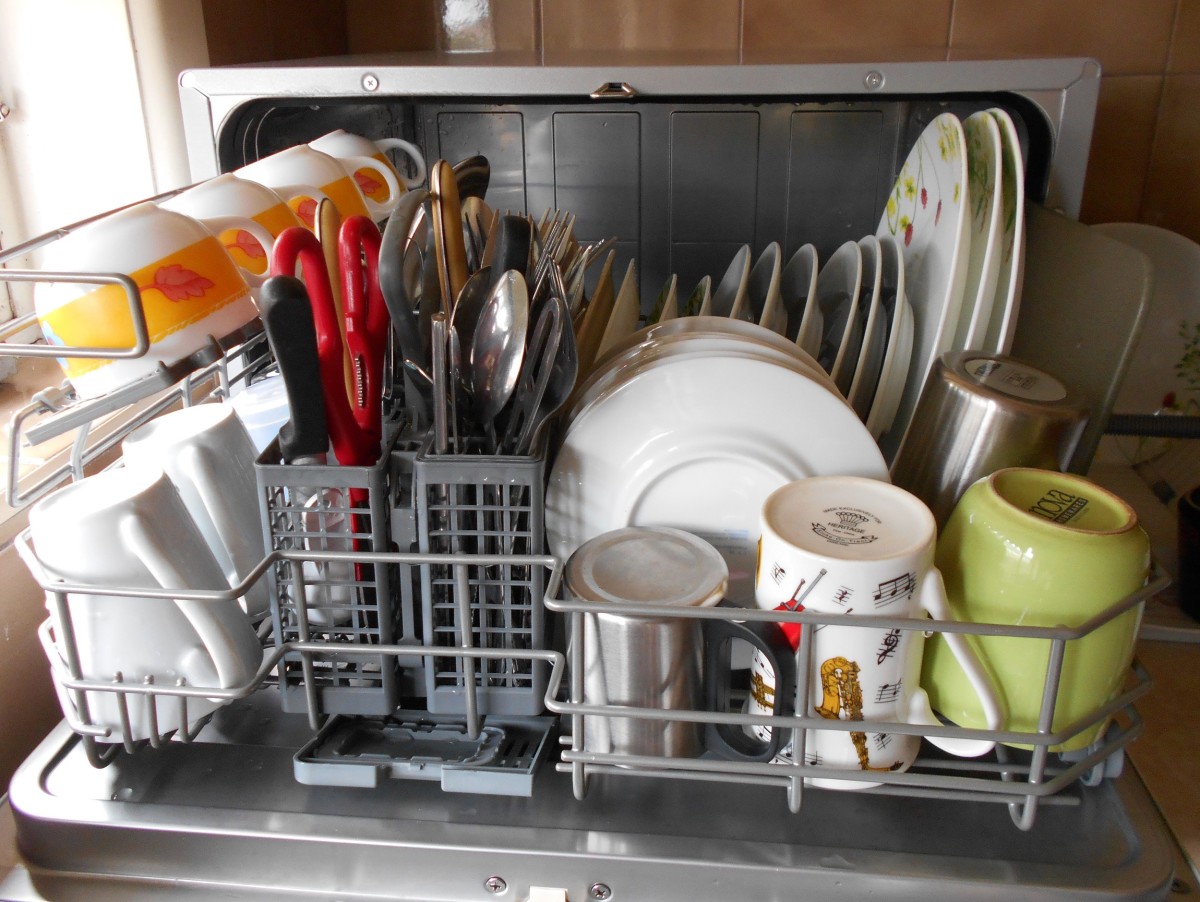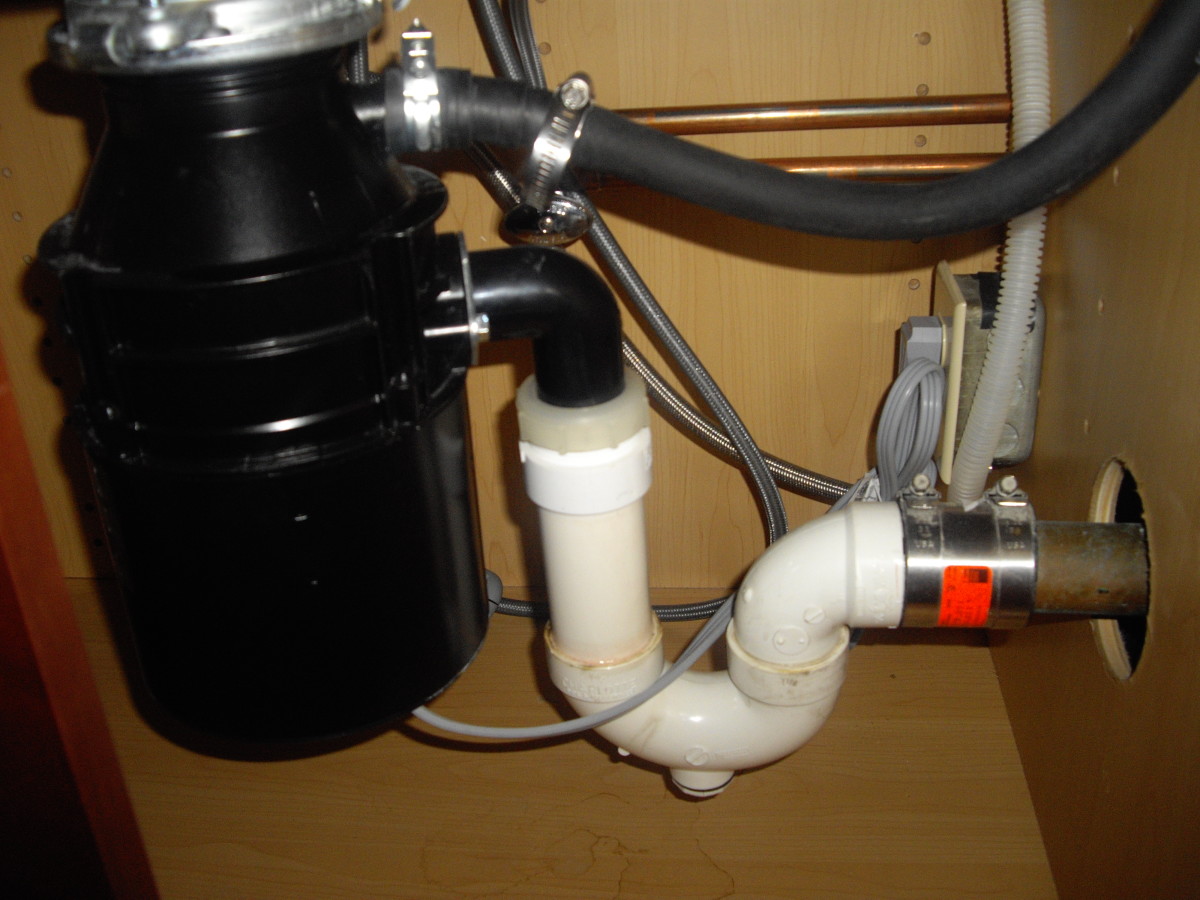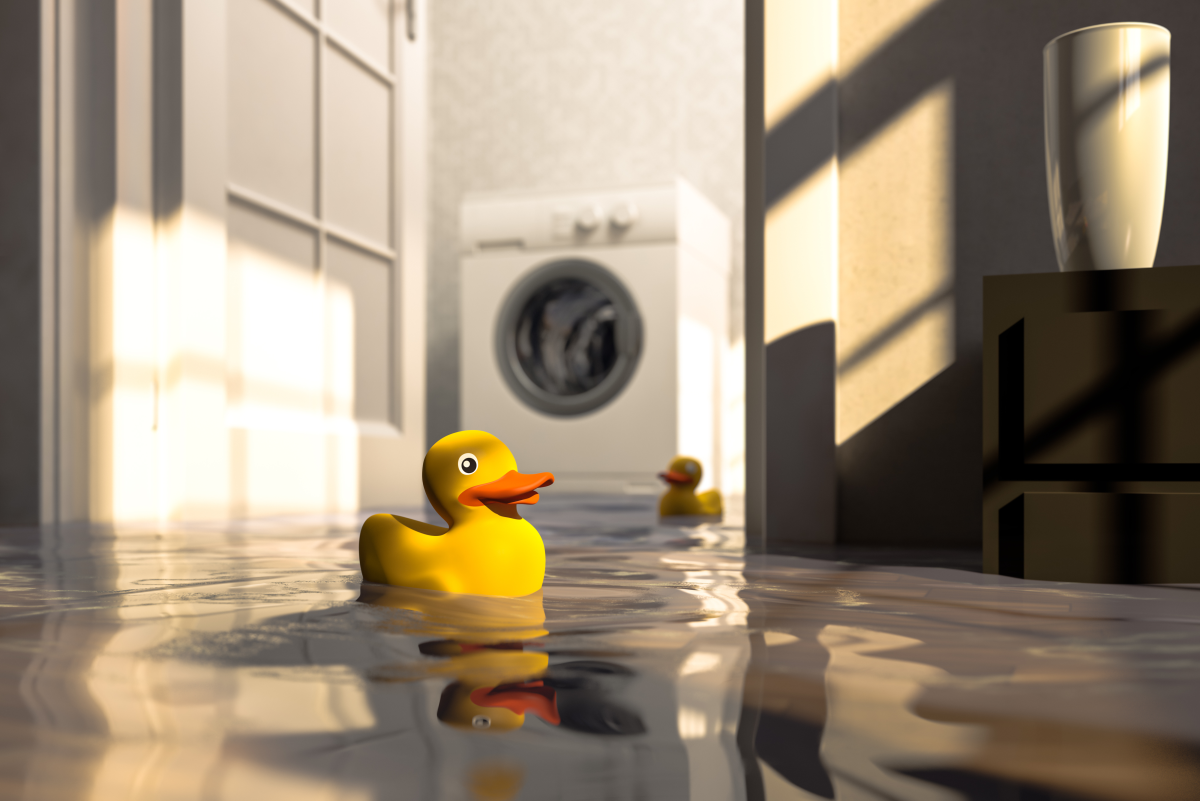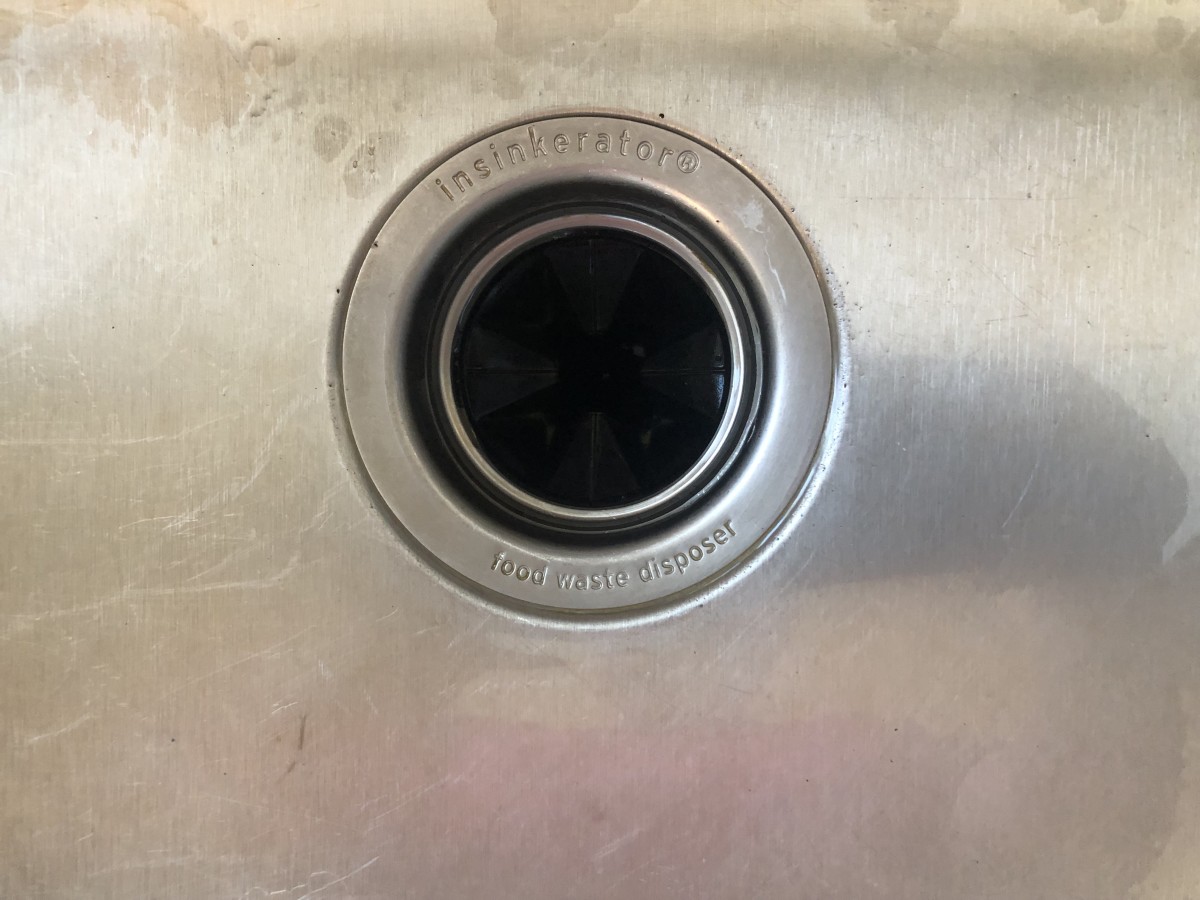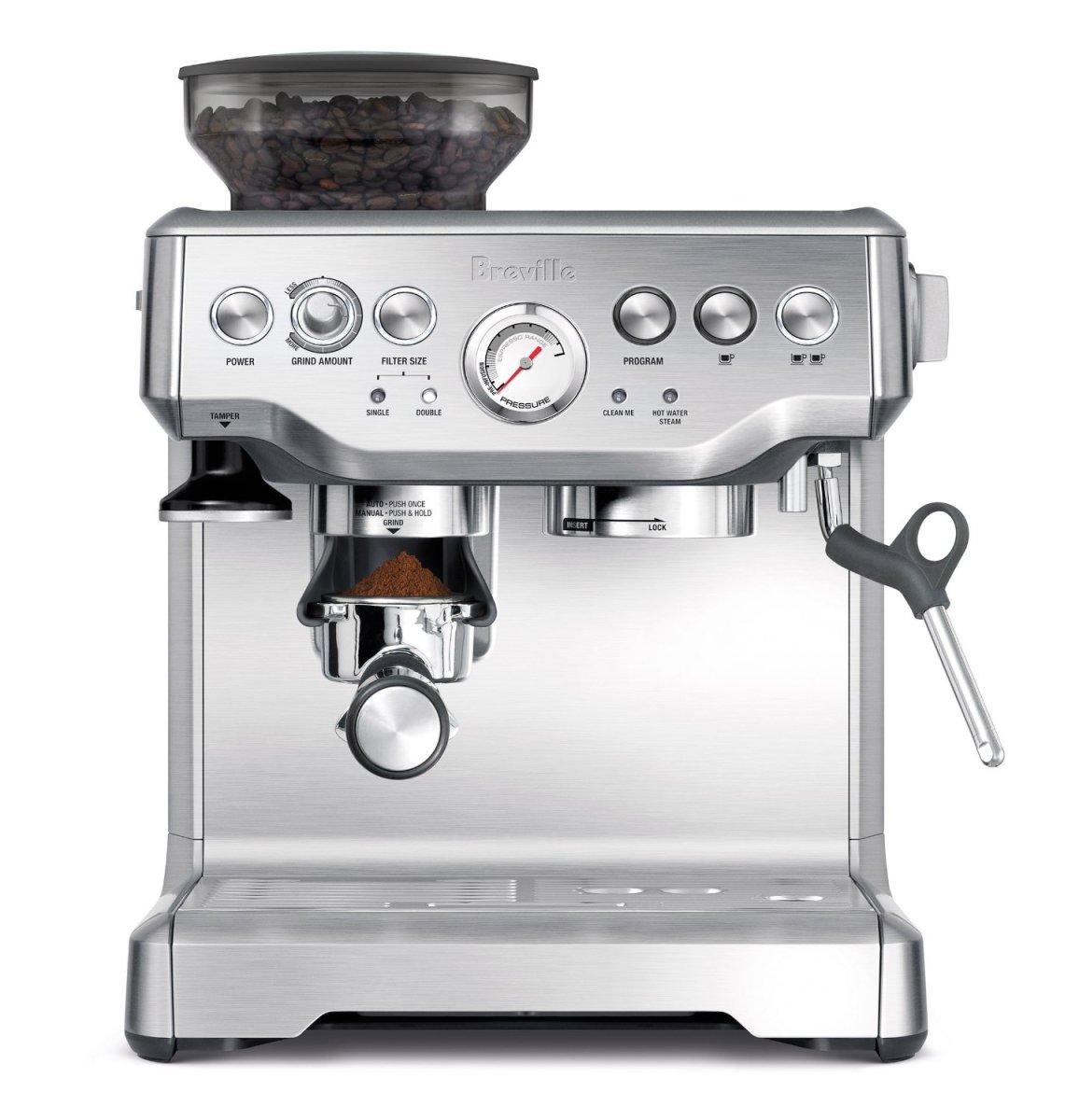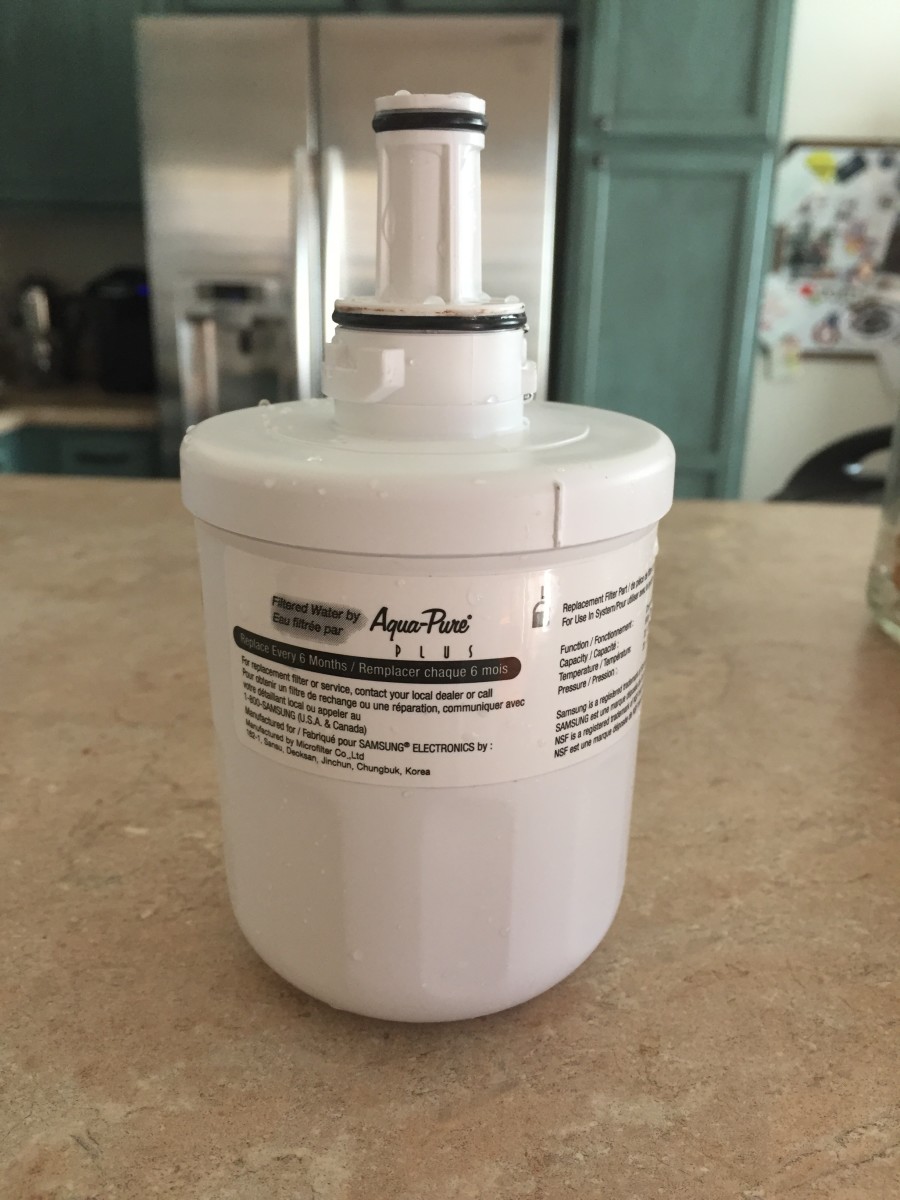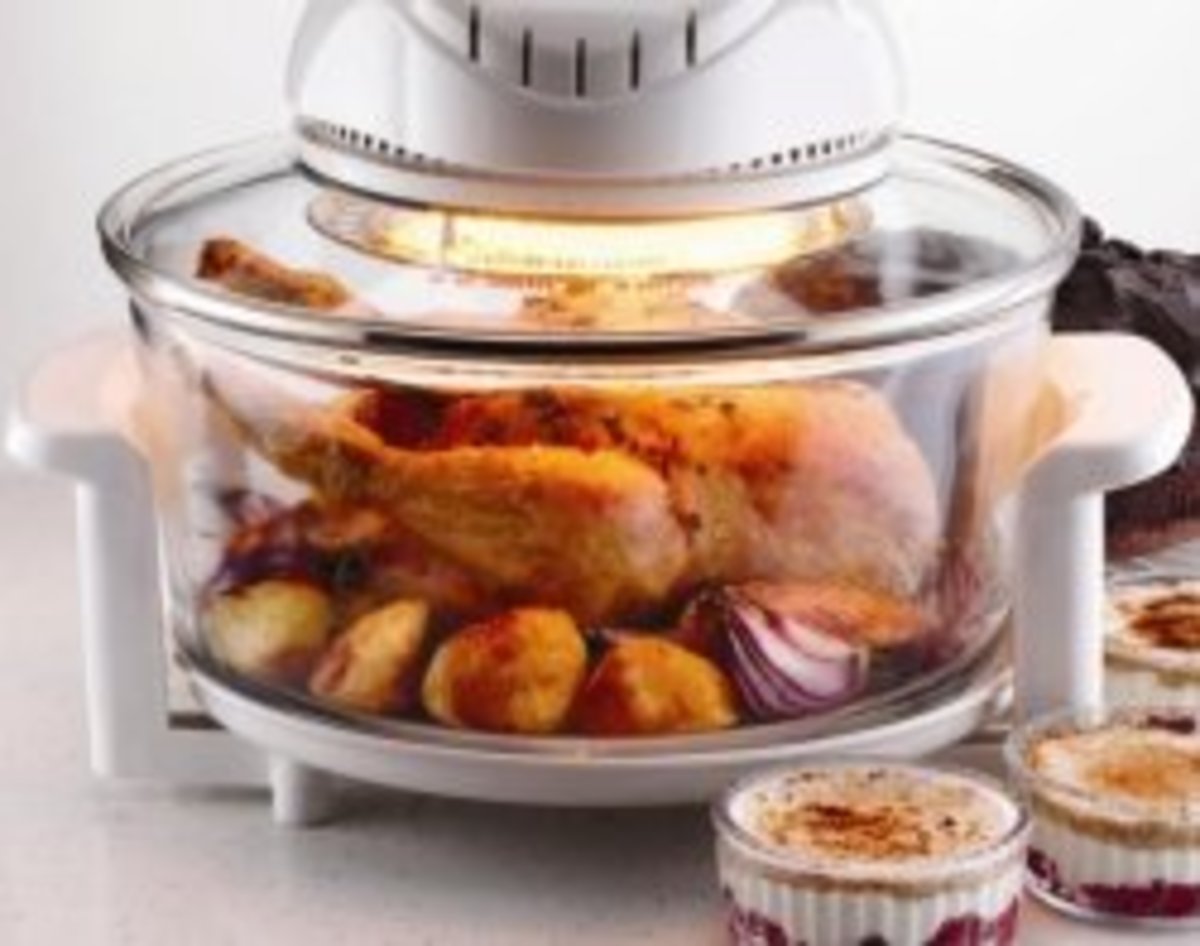- HubPages»
- Home and Garden»
- Home Appliances»
- Kitchen Appliances
Avoiding Drain Clogs And Sewage Spills With A Grease Trap
Has This Happened To You?
Has Your Sewer Ever Blocked?
Grease In The Sewers
The first part of this hub deals with the community effects of blocked sewers, why they get blocked, what is done to clear them and explains a little about sewage systems.
The second part deals with the household effects of allowing grease into the drainage system and what can be done to reduce the amounts from YOUR household. Why should you do this? Well, you could help speed your own journey to work or prevent disruption at your home or place of work. Blocked sewers can cause flooding with raw sewage, allow pest infestations, and may need roadworks to clear them, which can disrupt journeys and create havoc and smells.
Have You Heard Of These Before?
Have You Heard Of Grease Traps Before?
Overflowing Sewer
Has your sewer or the municipal one near you ever backed up? Maybe you got foul-smelling, dangerous, raw sewage in your yard or basement, or perhaps the road had to be dug up to clear it?
It was estimated back in the year 2000 that US sewers backup on average about 400,000 times annually and that municipal sewers overflow 40,000 times each year.
https://www.epa.gov/npdes/sanitary-sewer-overflows-ssos "EPA estimates there are at least 23,000 - 75,000 SSOs per year (not including sewage backups into
buildings) in the U.S." November 2016. (NOTE: SSO = Sanitary Sewage Overflow)
The EPA (Environmental Protection Agency) in 2007, said that blockages are the biggest reason for sewer overflows. And what is the biggest cause of these
blockages? Again, according to the EPA, it is GREASE. Another source estimates that half of ALL sewer overflows are caused by grease blockages and that more
than 10 BILLION US Gallons of raw sewage are spilled each year.
Why should you care? If your sewer didn't back up or your journey wasn't interrupted by roadworks perhaps you were lucky but did you know that there are things you personally can do to help prevent sewer overflow or blockages occurring, if not altogether, at least as often?
It's NOT The Rain!
"Oh, but it's the rain, blocking those storm sewers", I hear you say. Nope! In most developed countries these days, the storm overflow system is totally separate from the sanitary sewage system. The water that comes from rain generally goes into a separate drainage system because even if it overflows, it usually doesn't bring the health problems that a sewage overflow can bring, such as disease and smells.
The sanitary sewage system contains the water that comes from your kitchen, including your dishwasher, as well as the water and products from your toilet system.
Some places still have combined sanitary and storm water drainage systems.
Fatberg Blocking Sewer
So what is blocking the sewers? Mostly grease, according to the EPA, mixed in with baby wipes, sanitary products, syringes, plastic bottles and many other things that should not be anywhere near the sewage system. Sometimes you would wonder how on earth they got in there in the first place.
The video below is a professionally made documentary, filmed in London England, that shows an actual fatberg, discusses how it formed and shows what commercial premises are required to do to remove grease from their waste water. It ends with showing a few of the things that individuals can do to keep their own grease out of the sewers and help reduce fatbergs in the sewers below our feet.
Documentary: Fatberg in London Sewer
Roadworks For Sewers
Have you ever been affected by roadworks on sewers?
Does Detergent Not Help?
No. The grease in the waste water from your sink or dishwasher comprises three items, Fats, Oils and Grease, collectively called FOG. Not all fat oil or grease from food waste is taken up by the detergent you may use in your dishwasher or sink. With hot temperatures, especially in a dishwasher, some of the grease washed from plates is in liquid form, only to solidify once the water cools as it enters the sewer pipes. There, the solid grease sticks to the pipes and to any small projection that might be in them, building up over time to block the sewer pipe. Pouring hot water, detergent or bleach down the drain is NOT going to help.
In the UK, there are about 200,000 sewer blockages each year of which 75% are caused by grease blockages. Some advice on how to prevent grease-caused blockages can be found on the UK page for Southern water at https://www.southernwater.co.uk/help-advice/how-to-prevent-blockages
What About My Waste Disposal?
Are you saying, "But I have a waste disposal, I don't put grease down the drain."?
A waste disposal unit chops up all the food you add to it into tiny pieces and flushes that into the drains. If you clean your dirty plates into the garbage disposal, you are adding all the grease from those plates, such as mayonnaise, frying grease, meat trimmings, sauces, gravies, etc., straight into the sewage system. Chopping up all your food wastage and vegetable trimmings does not remove the fat, grease or oil from it, it just hides it in with the waste solids.
It also requires a lot of fresh, drinkable water to flush it away into the drains. Do you pay a water bill? Some places have very high water costs. Using a garbage disposal unit could be adding to those costs.
Show Me What You Mean
If you use only a dishwasher, you may not have noticed that grease can be left behind after dishes have been cleaned, even when you use hot water and detergent, unless you rinse the dishes after washing (as a dishwasher does). The following photographs show a basin, originally filled with hot "soapy / sudsy" water including detergent dish washing liquid, which has been used for cleaning dinner dishes and a frying pan.
Two cups were washed in the water after the greasy pan had been washed and these cups were not rinsed off after being washed. One was left upright, with some suds in the bottom. The other was turned upside down to dry on a drainer. It is possible to see in these photographs that both cups have greasy deposits on them, left behind after the detergent had dried in the air.
The water in the bowl was then left until it was cold and the water poured out. In this photograph, a greasy ring has been deposited around the side of the basin, even though there were plenty of suds in the water when it was hot.This shows that not all of the grease is taken up by the detergent. Some is left as free liquid while the water is hot, only to solidify and be deposited on the bowl as the water cools.
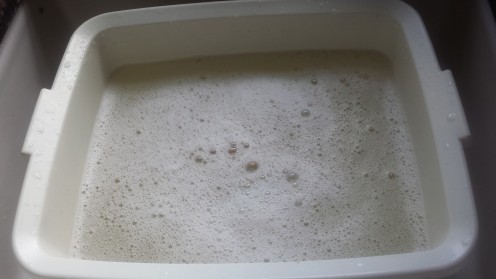
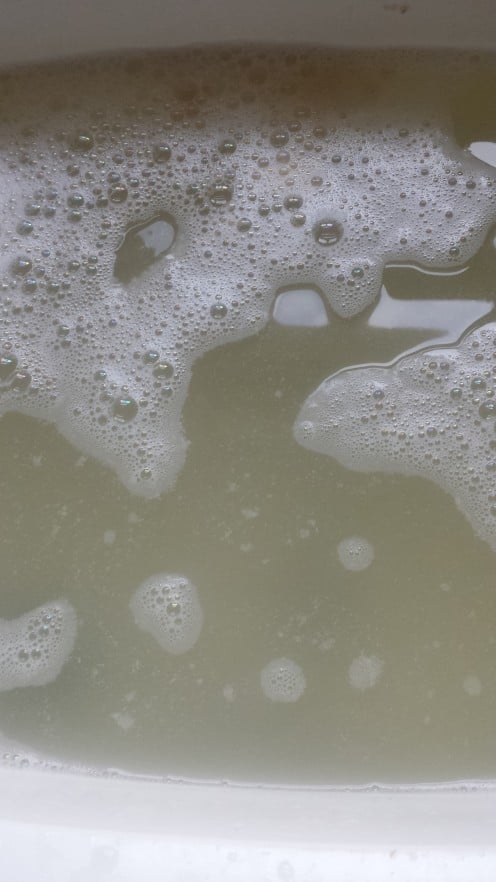
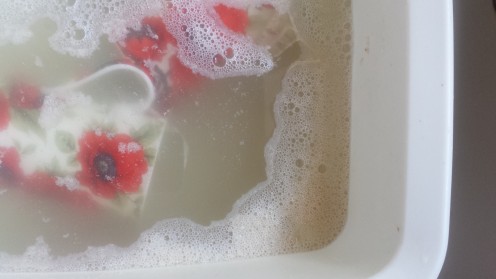
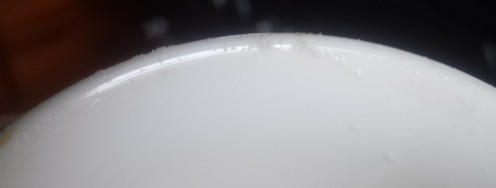
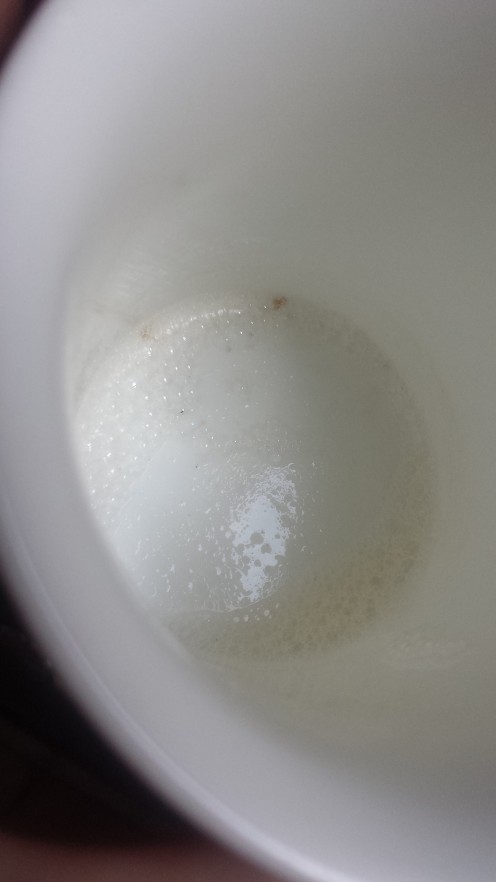
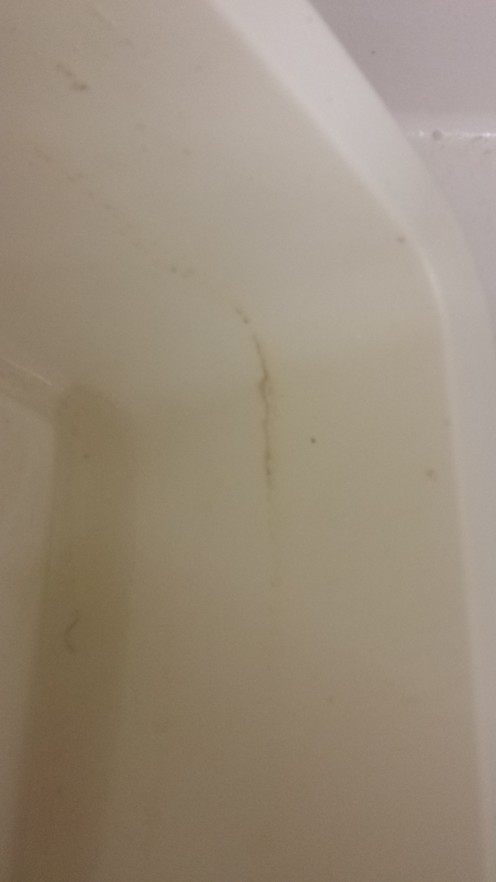
How Do I Prevent Drain Blockages In MY Drain?
The ways in which you can help prevent your own drain blocking is to:
- Scrape all solid scraps from used plates into a garbage disposal can or else into your food waste bin if your local authority provides this service.
- Dry wipe any grease from plates or pans with paper towel and dispose of the towel in the garbage can.
- Do not use a garbage disposal unit.
- You can also use a grease interceptor or grease trap on the water leaving the dishwasher or kitchen sink to trap any further grease or oil. These need to be cleaned regularly and the brown grease disposed of by a licensed contractor.
What Is A Grease Trap?
A grease trap or grease interceptor is a piece of plumbing equipment that is inserted between the outlet from a dishwasher or kitchen sink and the main sanitary sewer. The used water leaving a dishwasher or sink for dishes may contain a number of items as well as water, including solids, remains from plates, dishes, pans and pots, such as mayonnaise, gravy, fragments of food, etc, and grease, fat and oil from the food and the cooking process. If the sink has a garbage disposal unit attached, macerated food scraps and vegetable leftovers will also be included in this waste water.
If this water is passed through a grease trap, the solids drop to the bottom of the trap and the oily components float to the top. Some grease traps have a food filter at the top that separates out the larger pieces of food solids first. The cleaned waste water then passes into the sewage system. The grease trap must be cleaned out regularly, otherwise greasy contaminated water will eventually flow to the sewers.
Why Use Grease Traps?
If no trap is used, the greasy water from cleaning dishes and pans flows straight into the sewers. The dish water may originally have been hot and will have
included melted grease which promptly solidifies once the hot water cools.
Detergent may have been used to clean the dishes and this will also hold grease. Oils and fats will float on top of the water, forming a frothy scum in the sewer.
The cooled grease can stick to sewer pipes or any projection or imperfection in the pipes. Other items in the sewage can then stick to this grease, beginning the process of creating a sewer blockage. Items such as baby wipes (even the so-called flushable wipes) and all the other things people flush down the toilet, like diapers, sanitary items or pour into the drains, like used paint, etc.
For the avoidance of doubt, these should NOT be flushed.
Why Aren't Households Required To Have Grease Traps?
If only households are sending waste kitchen water to the sanitary sewer, there is less likely to be a back up or overflow or fatberg problem, PROVIDED the sewer pipes are large enough AND the households are not putting too much greasy water into the sewage system. The grease in waste water from domestic kitchens is often digested by bacteria in the sewage system but if there is too much grease in the waste water, these bacteria can be overwhelmed and a fatberg starts to form. This is most likely to happen at Christmas time, as a great deal of fat gets into the sewage systems at this time of year.
Where commercial food preparation premises are passing water into the sewage system, many jurisdictions now require them to use a grease trap to remove the FOG items from the water before a giant fatberg is created.
How Do Grease Traps Work?
A grease trap separates out the different components of used kitchen waste water into 3 types: solids, FOG (fats, oils and grease) and water (grey water).
Within a grease trap, there is likely to be first a baffle, which the used water hits, slowing its speed and allowing it to drop any solids to the base of the tank. The slowed water then enters the second compartment, where the FOG component floats to the top of the waste water. The exit from the grease trap is below the level at which the FOG floats, so the water that leaves the grease trap should have little or no FOG or solid component. The grease trap must be cleaned regularly. An actual grease trap is shown in the picture below.
What Does A Grease Trap Look Like?
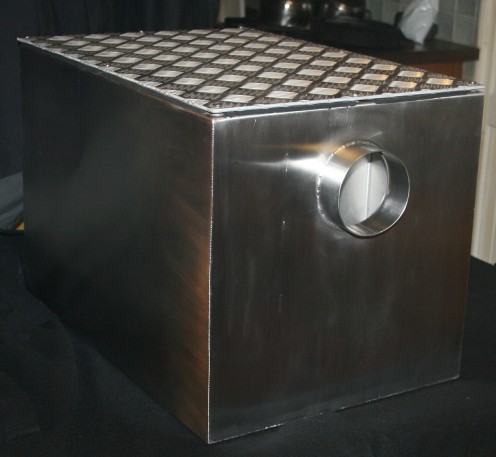
Where Can I Buy A Grease Trap?
Grease traps are available most places, just use a search engine and type in the words "grease trap" (without the quotes) to the search box. You'll find them from Arizona to New Zealand, from Belfast to Phoenix and most places in between.
Clearing A Sewer
The video below shows someone joining a sewage maintenance team as they clear a Fatberg from a London sewer. Not a job he enjoyed!
Clearing a Fatberg From A London Sewer
Summary
This hub has shown how grease in dish water can create problems in sewers beneath the streets and lead to sewer blockages, overflows and roadworks. It has also shown that blockages can be avoided by reducing grease in grey water by good kitchen practices in the home and by using both good practice and a grease trap in commercial premises.
Will you now change your dish washing practice at home or work? Would you consider getting a grease trap? Are you looking at your garbage disposal unit in a new light? Any other comments? Please let me know what you think.
© 2018 DreamerMeg

